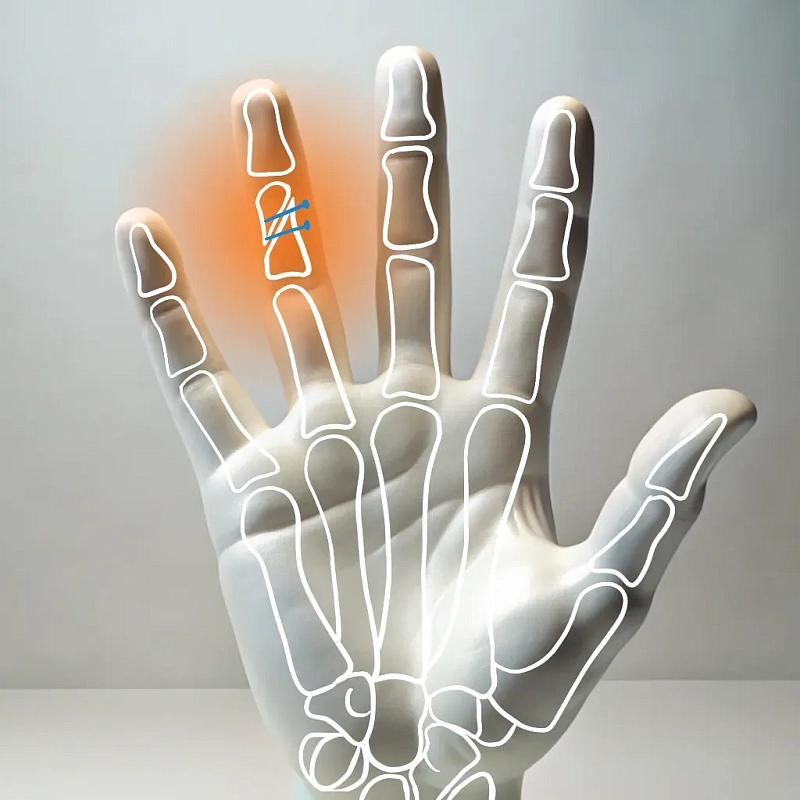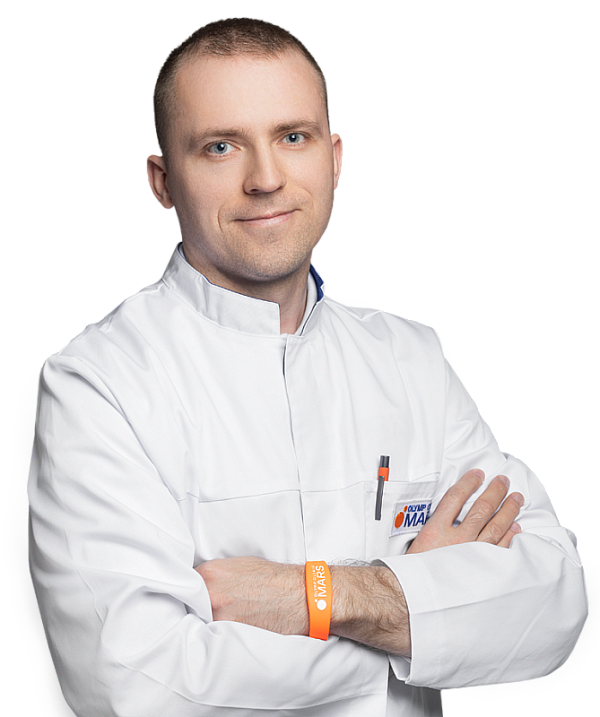Dupuytren contracture treatment
Restoring finger mobility in palmar fibromatosis.

Dupuytren contracture is a progressive condition that causes one or more fingers to become fixed in a bent position due to changes in the palmar fascia. Although the disease is rarely painful, it reduces quality of life. It begins with small nodules forming under the skin of the palm, which then develop into dense cords that pull the fingers towards the palm and limit their extension. The ring finger and little finger are most often affected.
In the early stages, the disease develops slowly. However, as it progresses, surgery is the only way to restore finger function.
Diagnostics include an assessment of finger mobility, a visual examination and palpation of the palm. Additional instrumental examinations, including X-rays of the hand, may be prescribed. In complex cases, a biopsy is performed to rule out other connective tissue diseases.
In the early stages, treatment may be limited to nonsurgical therapy. This involves using medications aimed at destroying fibrous bands and hormonal blockades. Patients may also be advised to wear a splint to keep their fingers straight while sleeping. If the disease has progressed significantly, resulting in a pronounced flexion deformity of the fingers, surgical intervention is required. There are several methods, ranging from percutaneous aponeurotomy, where the bands are cut without making incisions, to open aponeurectomy, where pathologically altered tissues are completely excised. Following any intervention, it is essential to undergo rehabilitation under physical therapist supervision.
We use advanced microsurgical equipment and instruments that help us perform procedures under magnification with minimal trauma.
The duration of recovery depends on the degree of flexion deformity. Hand function can be restored within a few days after surgery, with full recovery occurring after 1–3 months. During the rehabilitation period, it is important to perform the exercises prescribed by the physiotherapist and follow their recommendations regarding physical activity.
Benefits
Low risk of recurrence
After treatment, the risk of recurrence is minimized.
Advanced surgical methods
Provides a quick return to an active lifestyle.
Minimal intervention
Some forms can be treated with injections and physical therapy.
Hand function recovery
Helps restore finger mobility and normal activity levels.
Врачи
Смотреть всех врачейDoctor of Medical Sciences, Professor. Hand surgeon, orthopedic trauma surgeon, plastic surgeon, microsurgeon. Scientific Director of the Hand and Microsurgery Center. Chairman of the Interregional Public Organization “Hand Surgery Society”
Orthopedic trauma physician, hand surgeon, microsurgeon
Similar referral activities
Peripheral nerve damage treatment
Microsurgical repair of peripheral nerves after trauma and disease.
Hand tendon surgical suturing
Surgical procedure designed to repair damaged tendons and restore finger function.
Trigger finger treatment
Comprehensive treatment of Knott's disease involving surgical intervention.
Lymphatic and venous malformations treatment
Lymphatic and venous malformations are congenital vascular disorders with various symptoms, including pain, swelling, heaviness, and distension. Sclerotherapy and laser treatment are considered the most effective methods of treating such malformations.
Carpal tunnel syndrome treatment
Comprehensive median nerve compression treatment: from diagnostics to restoring hand mobility.
Cherry angioma removal
Cherry angiomas (CA) are benign vascular growths that appear as bright red bumps on the skin. They are usually no more than 5 mm in diameter. They often appear on people over 25 or 30 and are found on the neck, arms, chest, and abdomen.

